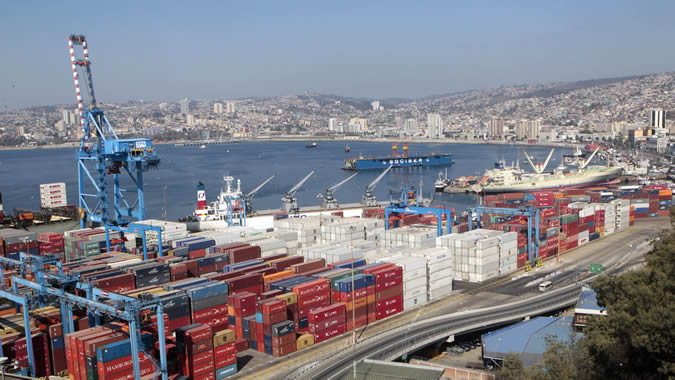Trade via Containers in the Region’s Ports Falls 0.9% in 2016
Work area(s)
Topic(s)
ECLAC’s new ports ranking confirms the decline in the region’s foreign trade last year and marks a loss in activity not seen since the crisis of 2009.

The throughput of containerized cargo in the ports of Latin America and the Caribbean fell 0.9% in 2016, according to data released today by ECLAC. This regional average continues the negative trend of deceleration that has been observed in the last few years and represents the biggest loss since the 2009 crisis.
The United Nations body unveiled a new edition of its ranking of container port throughput, published in its Maritime and Logistics Profile, which confirms two trends seen in the region in recent years: an overall steepening of the deceleration of foreign trade in container terminals and a high degree of heterogeneity in this activity’s growth rates within the region.
The deceleration in the regional average of port throughput began several years ago: 6.0% in 2012, 1.3% in 2013, 2.4% in 2014 and 2.5% in 2015. The deterioration in 2016 was mainly determined by a decline in activity in five countries: Brazil (-4.4%), Panama (-9.1%), Colombia (-3.6%), Argentina (-6.1%) and The Bahamas (-14.3%).
These drops were mitigated by the increases seen in some countries of the region, which contributed to raising the total volume: Mexico (3.2% rise), Chile (4.8%), Peru (8.4%), Ecuador (4.5%), the Dominican Republic (8.3%), Guatemala (8.8%), Costa Rica (7.3%) and Uruguay (9.5%).
The total volume of activity in 2016 reached approximately 47.5 million TEU*. The first 40 ports in the ranking represent nearly 90% of operations with this type of cargo in the region. The following 100 ports move the remaining 10% (4.4 million TEU).
Container port traffic on a global level also showed little dynamism in 2016. According to estimates published by Alphaliner, the volumes in the world’s top 100 container ports rose just 1.8% in 2016, to 555.6 million TEU.
The data compiled by the Economic Commission for Latin America and the Caribbean (ECLAC) points to great heterogeneity in the performance of port throughput, both at a subregional level and by country. In 2016, the east coast of South America experienced a decline in activity (-3.7%), which was more pronounced than in 2015 (-0.7%) due to the steeper drop recorded in the ports of Brazil and Argentina. Meanwhile, the west coast shows a rebound in container activity (4.5%) when compared with the growth rate seen in 2015 (0.4%), due to the positive evolution of port terminals in Chile (4.8%), Peru (8.4%) and Ecuador (4.5%). At the same time, Central America went from a positive growth rate in 2015 (3.4%) to a 3.5% decline in total volumes in 2016, mainly due to reduced throughput in Panama (-9.1%).
As in the past, the drivers of growth, deceleration or decline in activity in individual ports vary. For example, the ports of Callao in Peru (8.1%), Guayaquil in Ecuador (6.9%), Caucedo in the Dominican Republic (11.1%), and San Antonio (10.0%) and Lirquén (60.1%) in Chile, showed the highest rises in volume due to the success of their projects and their commercial management.
In contrast, the sharpest declines in volume of port activity were recorded by the terminals of Buenos Aires in Argentina (-5.7%), Kingston in Jamaica (-5.2%), Freeport in The Bahamas (-14.3%), Santos in Brazil (-6.9%), Cartagena in Colombia (-4.0%), and Colón (-8.9%) and Balboa (-9.2%) in Panama.
_______________
*TEU (Twenty-foot Equivalent Unit) is the standard unit of measurement, equivalent to a container of a length of 20 feet, or 6.25 meters, meaning it is a standard-sized metallic box that can be easily transferred between different modes of transportation, such as ships, trains and trucks.
Related content

Ports Ranking. The Top 20 in Latin America and the Caribbean in 2016
ECLAC updates every year its ranking of container port throughput, which shows the cargo volume in containers in 120 ports of the region, based on data obtained directly from port authorities and…
Related link(s)
Country(ies)
- Latin America and the Caribbean
Contact
Public Information Unit
- prensa@cepal.org
- (56 2) 2210 2040